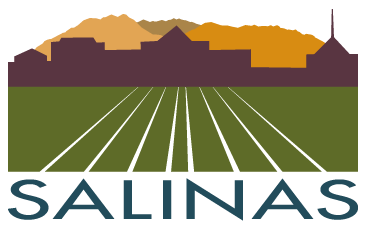1960 - 1969
The sixties were a time of unmatched growth for the city of Salinas. When the decade opened, the Salinas census count was 28,957. In 1963 when the Alisal District voted to become East Salinas, Salinas’ population nearly doubled overnight to about 50,000.
The energetic efforts of the Monterey County Industrial Development, Inc. (MCID) continued to bring industrial companies into the area: Nestle Chocolate Company opened in 1960; Firestone Tire and Rubber in 1963; Peter Paul, Incorporated in 1963; Fusion Rubbermaid Corporation in 1964; Green Giant (land purchase) in 1965; Fearn Foods, Incorporated (land purchase) in 1965; McCormick & Company, Inc., Schilling Division, in 1965; Thor Electronics in 1966; Mount Eden Nursery (Salinas area) in 1967; and Ashworth Brothers, Inc. (land purchase sou th of Salinas) in 1967.
There were many large construction projects. North Salinas High School opened for classes in January 1960 and was dedicated in April that same year. Notre Dame opened in 1964. Alisal High School opened in 1965 with freshmen, sophomore and junior classes. Two new library buildings opened to the public: the Salinas Public Library on Lincoln Avenue in 1960 and the El Gabilan Library on North Main Street in 1966. The new Salinas City Hall Rotunda emerged in 1964. A large Emporium Shopping Center north of Salinas was also proposed in the latter half of this decade.
Growth and prosperity were not without significant drawbacks. Numerous Salinas landmarks like the Carnegie library building, parts of Chinatown, and the old city hall, to name a few, disappeared. The Carnegie library building, built in 1909 by the efforts of dedicated citizens, was leveled in August of 1960. The site is now a bank building. In 1961 homes and businesses in Chinatown were demolished under the federal Urban Renewal Program. In 1964 the old city hall was razed with difficulty, taking workmen two days to destroy the picturesque cupola. That site is a parking lot on Salinas and Gabilan Streets. Some Salinas residents still regret these losses.
Decaying buildings on Main Street, a concern mentioned by the City Council in 1957, was still being discussed in 1966, and revitalization of the downtown area of Salinas became a key issue. Meanwhile the established merchants expressed concern about the impact of the proposed Emporium Shopping Center, later called Northridge.
In addition to being an important Industrial complex and a retail center, Salinas maintained its position as the “Hub of Vast Agricultural Area” as noted in the Salinas Californian of February 28, 1966. Though the Monterey County crops brought in a record $212,732,800 in 1969, signs of labor related problems increased in the sixties. For example, a tragic event on September 17, 1963 focused attention on the safety of the Bracero field worker. On the afternoon of September 17, 1963, a 71 - car Southern Pacific freight train sheared through a light - bodied labor bus killing 28 of the 57 Mexican national field workers. Eventually the death toll reached 32. The Salinas Californian of September 18, 1963 called it the worst bus tragedy in the state and in United States history.
The injured were taken to Alisal Hospital. Strangers, area residents and Mexican national workers all responded to the Salinas Valley Red Cross Chapter appeal for blood donors. A requiem high mass for the dead was held in the Palma High School Auditorium. Right Reverend Monsignor Thomas J. Earley, V.F., estimated there were six thousand people in the auditorium itself for the service, and three thousand more outside. Five government agencies investigated the crash. But questions remained. Many residents never forgot the disaster. Twenty some years later Cesar Chavez referenced it in the opening of his November 9, 1984 speech to the Commonwealth Club of California:
“Twenty - one years ago, this last September, on a lonely stretch of railroad track paralleling U.S. Highway 101 near Salinas, 32 Bracero farm workers lost their lives in a tragic accident. The Braceros had been imported from Mexico to work on California farms. They died when their bus, which was converted from a flatbed truck, drove in front of a freight train. Conversion of the bus had not been approved by any government agency. The driver had tunnel vision. Most of the bodies laid unidentified for days. No one , including the grower who employed the workers, even knew their names.”
Undocumented workers were an issue for established laborers in an area. Local workers felt the undocumented workers took away their jobs and kept the pay low. Then in 1964, United States Public Law 78 authorizing the 1951 Bracero Program expired, and there was a mad scramble for an adequate labor supply. Strawberry production had to be cut back because growers couldn’t find workers who could pick fast enough. In 1965 the National Farm Workers Association, led by Cesar Chavez, joined the Agricultural Workers Organizing Committee (AWOC) and called strikes against selected grape growers in the San Joaquin Valley. Their success caused great concern among California growers and would have implications for Central Coast agriculture in the following decade.
National and international events and sensibilities also made a mark in Salinas. The sixties were a time of heightened social conscience. Locally in 1961, Milton Emery started the Victory Mission in an old, steel - lined gambling hall at 43 Soledad Street to “bring hope to the hopeless.” The only other such institution, the Rescue Mission, had been founded in 1943 by Mr. and Mrs. Fred Villa, but was later supported by the Community Chest. Both offered a night’s rest for those down on their luck.
Although Khrushchev’s 1960 train stop in Salinas created no stir (the premier was reportedly asleep at the time), the 1962 Cuban Missile Crisis did cause fallout shelters to be built in some n ew homes in north Salinas. John Steinbeck also visited the area in 1960. His account of the journey across country was published in the book Travels with Charley (1962) wherein he expressed his pique and his nostalgia about the visit:
“...I felt resentment toward the strangers swamping what I thought of as my country with noise and clutter and the inevitable rings of junk.” (Travels with Charley , p. 148) And as he gazed on his country from Fremont Peak he wrote: “I printed it once more on my eyes, south , west, and north, and then we hurried away from the permanent and changeless past where my mother is always shooting a wildcat and my father is always burning his name with love.” (Travels with Charley , p. 158 )
That same year Steinbeck was awarded the Nobel Prize for Literature and the Salinas Public Library named their browsing room for him. In 1964 Jack Patton, a retired Salinas Californian newspaper editor donated his first editions of Steinbeck’s works to the Salinas Public Library, laying the foundation for the Steinbeck Archives.
Just a few years before his death, John Steinbeck’s syndicated dispatches from his travels in Vietnam and Southeast Asia appeared in the Salinas Californian . Then on December 20, 1968 following a period of ill health, John Steinbeck died in New York City. His remains were buried in the Salinas Garden of Memories. The decade closed with the naming of the Salinas Public Library building on Lincoln Avenue as the John Steinbeck Library in honor of the Salinas born author.
 Facebook
Facebook Twitter
Twitter Instagram
Instagram Youtube
Youtube